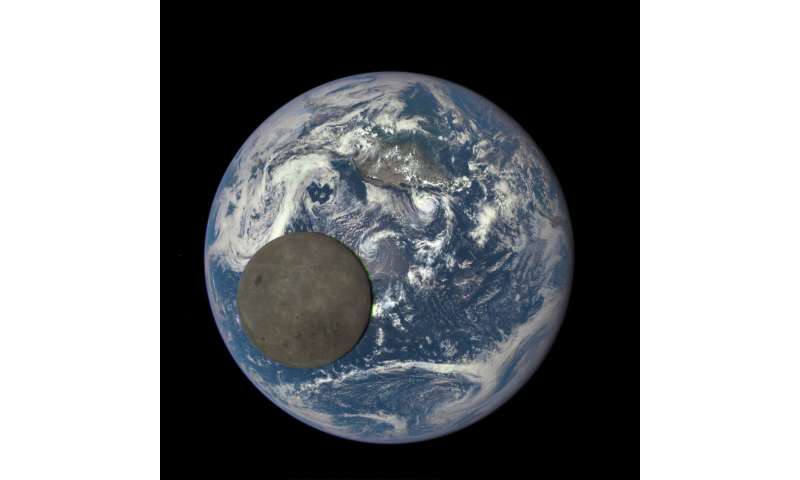#Scientists provide new explanation for the strange asymmetry of the moon
“#Scientists provide new explanation for the strange asymmetry of the moon”

The Earth‐moon system’s history remains mysterious. Scientists believe the system formed when a Mars‐sized body collided with the proto‐Earth. Earth ended up being the larger daughter of this collision and retained enough heat to become tectonically active. The moon, being smaller, likely cooled down faster and geologically froze. The apparent early dynamism of the moon challenges this idea.
New data suggests this is because radioactive elements were distributed uniquely after the catastrophic moon‐forming collision. Earth’s moon, together with the sun, is a dominant object in the sky and offers many observable features providing evidence about how the planet and the solar system formed. Most planets in the solar system have satellites. For example, Mars has two moons, Jupiter has 79 and Neptune has 14. Some moons are icy, some are rocky, some are still geologically active and some relatively inactive. How planets got their satellites and why they have the properties they do are questions that could shed light on many aspects of the evolution of the early solar system.
The moon is a relatively cold rocky body with a limited amount of water and little tectonic processing. Scientists presently believe the Earth‐moon system formed when a Mars‐sized body dubbed Theia—who in Greek mythology was the mother of Selene, the goddess of the moon—catastrophically collided with the proto‐Earth, causing the components of both bodies to mix.
The debris of this collision is thought to have rapidly separated to form the Earth and moon, perhaps over a few million years. The Earth ended up being larger, and its size was just right for it to become a dynamic planet with an atmosphere and oceans. Earth’s moon ended up being smaller and did not have sufficient mass to host these characteristics. Thus, thanks to the dynamics of the collision that formed the Earth-moon system, Earth exhibits idiosyncrasies such as retaining volatile substances like water or the gasses that form the atmosphere, and having sufficient internal heat to maintain long‐term planetary volcanism and tectonics. Decades of observations have demonstrated that lunar history was much more dynamic than expected, with volcanic and magnetic activity occurring as recently as 1 billion years ago, much later than expected.
A clue as to why the near and far side of the moon are so different comes from strong asymmetry observable in its surface features. On the moon’s perpetually Earth‐facing near side, dark and light patches are observable with the naked eye. Early astronomers named these dark regions ‘maria,” Latin for ‘seas,” thinking they were bodies of water by analogy with the Earth. Using telescopes, scientists were able to figure out over a century ago that these were not in fact seas, but more likely craters or volcanic features.
Back then, most scientists assumed the far side of the moon, which they would never have been able to see, was more or less like the near side.
However, because the moon is relatively close to the Earth, only about 380,000 km away, the moon was the first solar system body humans were able to explore, first using non‐crewed spacecraft and then manned missions. In the late 1950s and early 1960s, non‐crewed space probes launched by the USSR returned the first images of the far side of the moon, and scientists were surprised to find that the two sides were very different. The far side had almost no maria. Only 1% of the far side was covered with maria compared with ~31% for the near side. Scientists were puzzled, but they suspected this asymmetry offered clues as to how the moon formed.
If you want to read more Like this articles, you can visit our Science category.
if you want to watch Movies or Tv Shows go to Dizi.BuradaBiliyorum.Com for forums sites go to Forum.BuradaBiliyorum.Com
